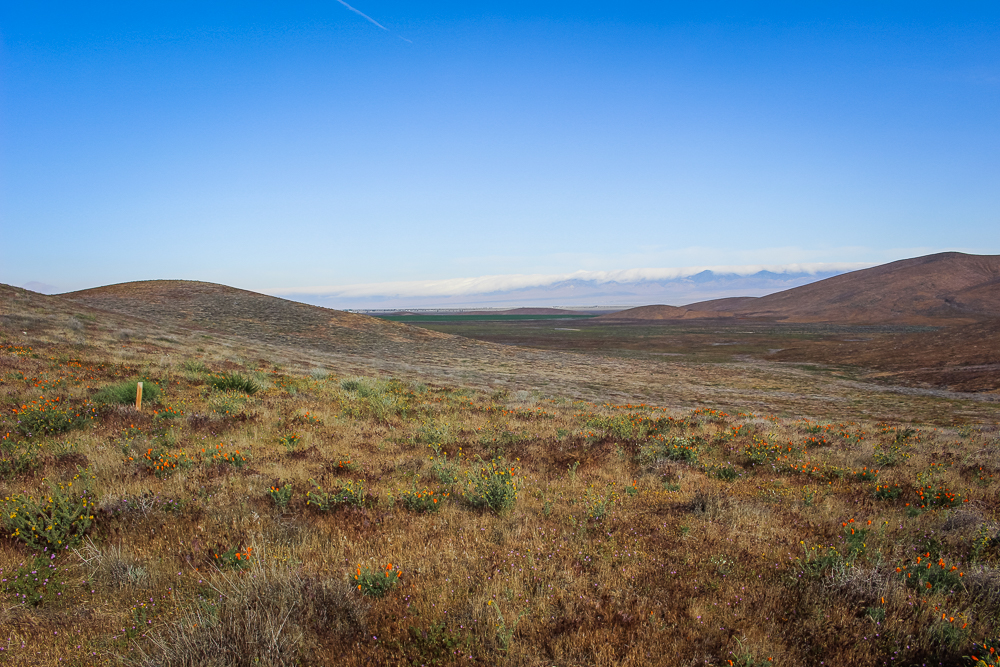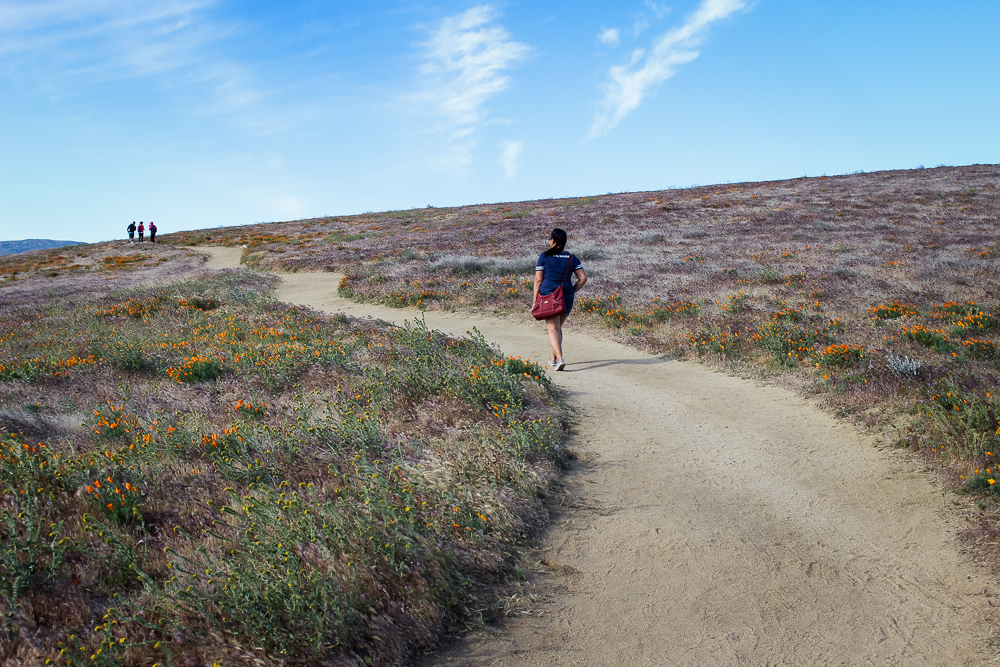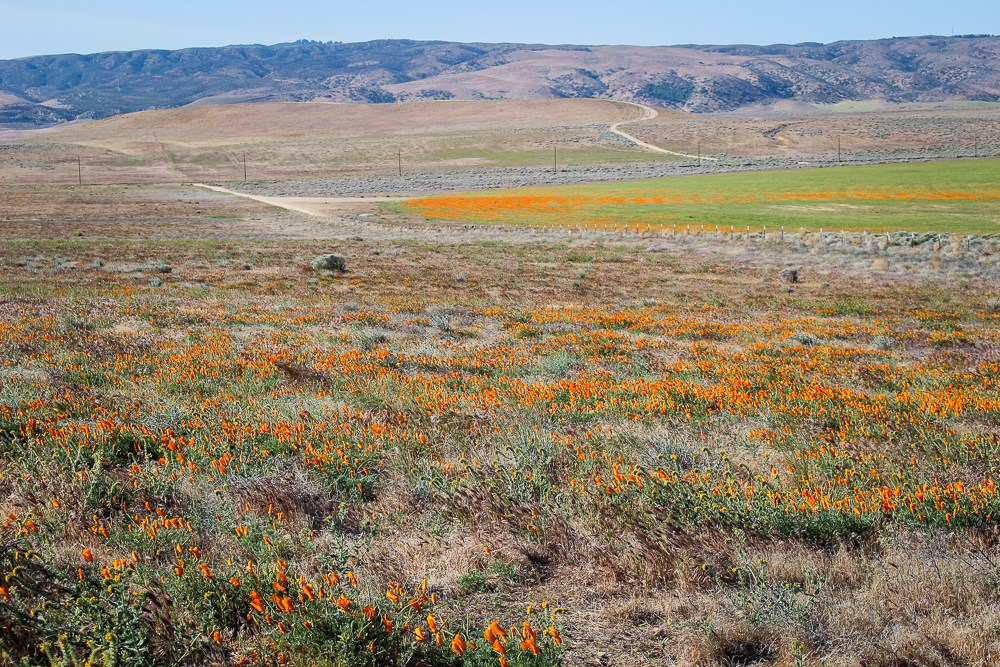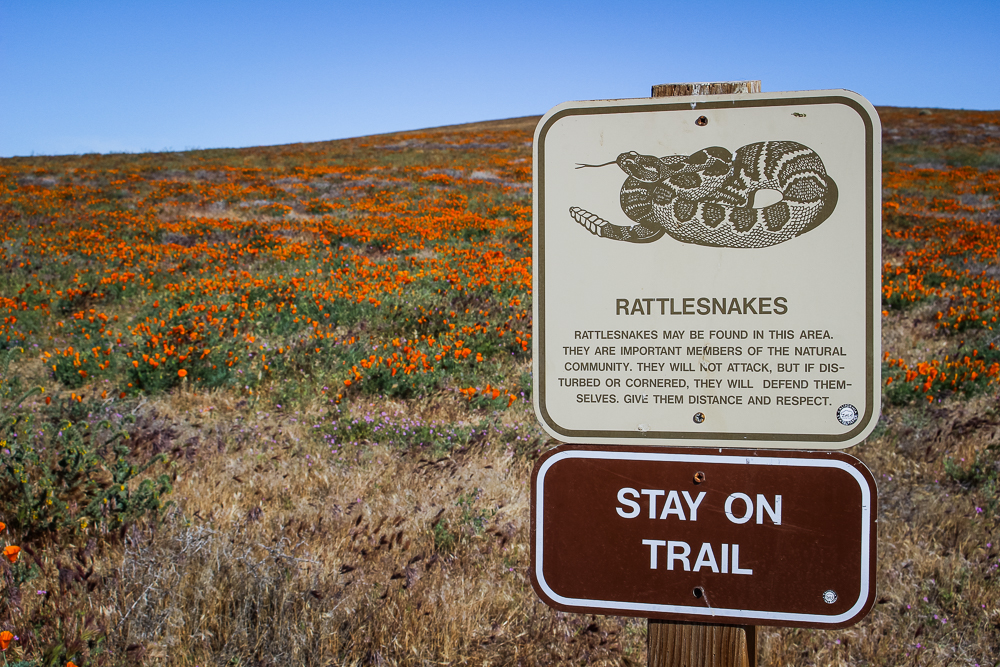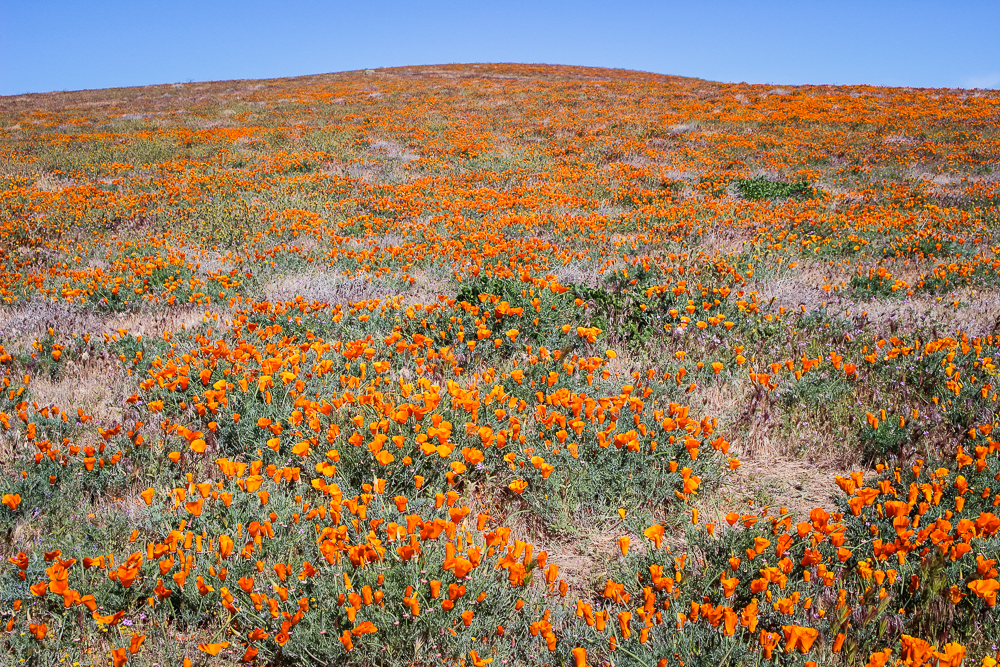For the last five years, California experienced a crippling drought. Widely reported on, those of us in California all felt the impact of the drought in some way or another—water use restrictions, fear of wildfire, criticism for taking long, relaxing showers, you name it! And then as if the climatic, miracle-finale to a four-hour Bollywood musical, this winter, warm seas off of Hawaii led to an eastward jet that produced rainstorm after rainstorm for California. In just half a year, nearly all of our drought was erased.
In addition to replenished reservoirs, snow-packed mountains, and the occasional judgement-free shower, California experienced a wildflower renaissance. Popularly dubbed the "Superbloom", word of California's wildflower season reached as far as the New York Times. So naturally, Cindy and I wanted to see it for ourselves!
The closest destination for wildflowers to our home in Los Angeles is the Antelope Valley Poppy Reserve. Located just 9 miles east of Lancaster, a desert town 55 minutes north of Los Angeles, the reserve is the perfect local destination to see the California State Flower: Eschscholzia Californica, or the California Poppy.
The reserve is a California State Park, complete with a parking lot, restrooms, a visitor's center (to us, a clear improvement over some of the flower fields which required longer drives and off-road driving). As of early 2017, the park cost just $10-per-vehicle to enter.
We arrived very early, around 8:30 in the morning. As the California Poppy Festival was being hosted a few miles away, we assumed people would already be at the fields in droves but were pleased to find the parking lot was mostly empty. This was, as we would find out, because a lot of the poppies were still closed-up in the cold, morning air. Still, there was a noticeable smattering of orange all across the hillside.
We headed to the western-edge of the reserve to Godde Hill, as reccomended by a ranger.
The orange flowers, sandy paths, and our shorts give these photos an appearance of warmth, but make no mistake, it was 60° and windy as hell! Most visitors were in a light jacket and we were the idiots who assumed, "Lancaster, desert: must be hot!". When we reached the top ridge of Godde Hill, the wind was ripping past us and it was hard to get close-up shots of the flowers!
Still, the wind kept the air crystal clear and we could see straight through to the mountains bordering Tehachapi and the 5 (through the Grapevine).
Happily for us, it warmed as we reached the end of the ridge and doubled back along the base of the Godde Hill. The hill shielded the air from the wind and allowed the sun's heat to reach the flowers. From here on, the poppies were beginning to open. Every few steps, we'd take the "best picture" we've taken, only to find an even better one 25 feet down the path.
In addition to landscape photos, the poppies made for excellent macro-photography. Although, behind the scenes, the view wasn't quite as pretty.
Still, when you caught us by our front-sides, the reserves made for great photos!
By the time we reached the end of Godde hill, where our walk began, the fields were on fire with poppies.
The Antelope Valley Poppy Reserve was a neat experience. I'm sure this will not be the last time we go and and would recommend it for anyone who hasn't seen an entire hill painted in wildflowers. Time your visit after any spring-rain and I imagine you will be pleased with the view.
For more photos of our trip to the poppy reserves, check out the gallery below!





























